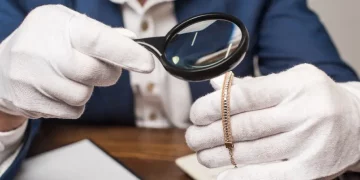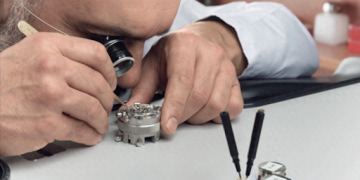The world of collectibles is exciting, rewarding, and full of opportunities for those who are knowledgeable and skilled in negotiation. Whether you’re looking to buy rare art, vintage watches, limited-edition memorabilia, or antique furniture, honing your negotiation skills can significantly impact the final price you pay for your collectible. Great negotiators aren’t just about getting the lowest price—they know how to create value, manage risks, and build relationships in the process. In this article, we’ll explore strategies to help you sharpen your negotiation skills and secure the best deals in the collectibles market.
1. Understand the Market and the Item
Before entering any negotiation, you need to have a thorough understanding of both the specific collectible you’re interested in and the broader market dynamics. Knowledge is power, and the more you know about the collectible you’re buying, the better equipped you’ll be to negotiate effectively.
Research the Item
- Provenance: Understand the collectible’s history of ownership and authenticity. A clear provenance increases the item’s value, so be sure to verify any details and documents the seller provides.
- Rarity and Demand: Determine how rare the item is, and check if there’s current demand for it. Items with high demand and rarity typically carry a premium price.
- Condition: Evaluate the item’s condition carefully. Items in pristine condition are often priced higher, while those showing signs of wear may allow room for negotiation.
Know Comparable Sales
- Auction Records: Look at recent auction results for similar items to determine the typical market value.
- Retail and Dealer Prices: Check with reputable dealers or online marketplaces to understand the standard asking prices for comparable items.
Tip: Always have a good understanding of what the item is worth before you begin negotiating. A well-researched collectible gives you confidence and credibility during the discussion.
2. Build Rapport and Develop Relationships
A successful negotiation often goes beyond the numbers. Building rapport with the seller is a powerful tactic that can help you secure a better deal. People are more inclined to negotiate favorably with someone they trust and like.
How to Build Rapport:
- Establish Common Ground: Discuss shared interests, whether it’s a passion for the collectible or common experiences in the market. Being genuinely interested in the item and its history can create a bond.
- Be Respectful and Polite: Approach the negotiation with respect, and avoid acting over-eager or confrontational. People are more likely to lower the price for buyers who treat them with courtesy.
- Be Transparent About Your Interest: Let the seller know that you are serious and knowledgeable about the item, but don’t oversell your interest. Being overly enthusiastic may signal desperation and weaken your position.
Why It Works:
- Trust and Confidence: If a seller feels comfortable with you, they may be more willing to offer a better price or even offer a discount.
- Future Deals: Establishing a positive relationship may give you the opportunity to negotiate with the same seller in the future, which can lead to more favorable terms over time.
Tip: Think of negotiations as relationship-building rather than one-time transactions. Sellers are more likely to accommodate buyers they feel comfortable working with.
3. Master the Art of Timing
Timing plays a crucial role in any negotiation, especially in the collectibles market. Knowing when to make an offer, when to walk away, and when to act decisively can give you a significant advantage.
How to Use Timing to Your Advantage:
- Timing the Market: In the collectibles world, prices can fluctuate based on seasons, trends, or even specific events (like auctions). Try to make your purchase during off-peak times when demand is lower. For example, after a major auction season might be a good time to secure a deal.
- Making Your Offer at the Right Moment: Sellers may be more open to negotiating when they’re motivated—whether it’s due to the financial need, overstocked inventory, or an item that has been sitting for a while.
- Walking Away: Sometimes, walking away from a deal can create leverage. Sellers may come back with a better offer if they know they risk losing a buyer.
Avoiding Bad Timing:
- Avoid High-Pressure Situations: If the seller is rushing you or pressuring you to make a decision, it could be a sign that they are trying to force a quick sale at a higher price. Take your time, evaluate the offer, and negotiate.
- Recognize the Seller’s Motivation: If the seller is eager to make a deal because they’ve had the item for a long time or need cash quickly, this is the right time to negotiate for a lower price.
Tip: Recognize when the timing is right to push for a deal and when to step back. Don’t rush into a purchase—wait for the optimal moment.
4. Use Anchoring and Concessions Strategically
Anchoring is a psychological tactic where the first price mentioned (whether by you or the seller) sets the tone for the rest of the negotiation. Being mindful of how you use anchors and concessions can help you secure a better deal.
How to Use Anchoring:
- Start Low: Begin by offering a price that’s lower than what you’re actually willing to pay, but still within the realm of possibility. This sets a lower benchmark for the negotiation.
- Frame Your Offer: When presenting your offer, frame it in a way that shows you’re making a reasonable offer based on your research. For example, “Based on recent auction results, I think a fair price would be X.”
Strategic Concessions:
- Give Something Small: If you’ve already anchored your offer, you can make small concessions as you negotiate. For example, if you’ve made a low offer, you can incrementally increase it to show goodwill without surrendering too much.
- Ask for Something in Return: When you make a concession, ask for something in return. For instance, if the seller agrees to reduce the price, you could ask for additional items (like accessories or a certificate of authenticity).
Tip: Be strategic with concessions. Giving too much too quickly can diminish your bargaining power, while too many demands may irritate the seller.

5. Know When to Walk Away
One of the most powerful negotiation tools is knowing when to walk away from a deal. If the terms aren’t favorable, or the price is too high, don’t hesitate to walk away and look for better opportunities elsewhere.
How to Walk Away Effectively:
- Remain Calm and Confident: If the negotiation isn’t going in your favor, stay calm. Politely tell the seller you need more time to think it over. Sometimes this can prompt the seller to reconsider your offer.
- Don’t Show Desperation: Avoid giving the impression that you “need” the item at any cost. Desperation can make the seller feel empowered to maintain their price.
- Leave the Door Open: When you walk away, do so in a way that leaves the possibility of future negotiation open. “I’ll think about it, but feel free to reach out if things change” keeps the conversation friendly and ongoing.
Why Walking Away Works:
- It Creates Pressure: If the seller sees you’re not desperate to make a deal, they may reconsider their position. Sometimes, they’ll come back with a better offer, especially if they feel you might be a serious buyer.
- Avoids Impulsive Decisions: Walking away can also help you avoid making a rushed or impulsive decision, which could lead to overpaying.
Tip: Know your limits and be prepared to walk away if the deal isn’t right for you. Don’t let emotions drive your decisions.
6. Finalizing the Deal: Ensure Clear Terms and Documentation
Once the negotiation reaches a point where both parties are satisfied with the price and terms, it’s essential to ensure that the agreement is clearly documented. This avoids misunderstandings or issues down the line.
Key Points to Finalize:
- Clear Payment Terms: Make sure payment terms (e.g., deposit, final payment) are clearly defined, including any payment methods, deadlines, and conditions.
- Condition of the Item: Confirm the condition of the item, and make sure the seller agrees to any warranties, returns, or guarantees.
- Shipping and Handling: If the collectible is being shipped, clarify the shipping process, including any insurance or handling fees.
- Proof of Authenticity: Ensure that any required certificates, appraisals, or documentation are included with the final purchase.
Why Finalizing is Crucial:
- Avoid Misunderstandings: Clear documentation protects both parties and ensures the terms of the deal are respected.
- Secures Your Investment: If you’re investing in high-value collectibles, having written agreements ensures that you’re protected in case there are any issues with the item after the purchase.
Tip: Always ask for written documentation of the final deal, including a description of the item, price, and any agreements regarding authenticity and condition.
Conclusion
Mastering the art of negotiation in the collectibles market requires preparation, strategy, and patience. By understanding the market, building relationships, and using negotiation tactics like anchoring and timing, you can secure the best deals and increase the value of your collection. Remember that successful negotiations are not just about price—they also involve building trust, understanding the seller’s motivations, and finding mutually beneficial terms.
By refining your negotiation skills, you’ll be better positioned to navigate the collectibles market and walk away with valuable items at fair prices. Happy collecting!


















































